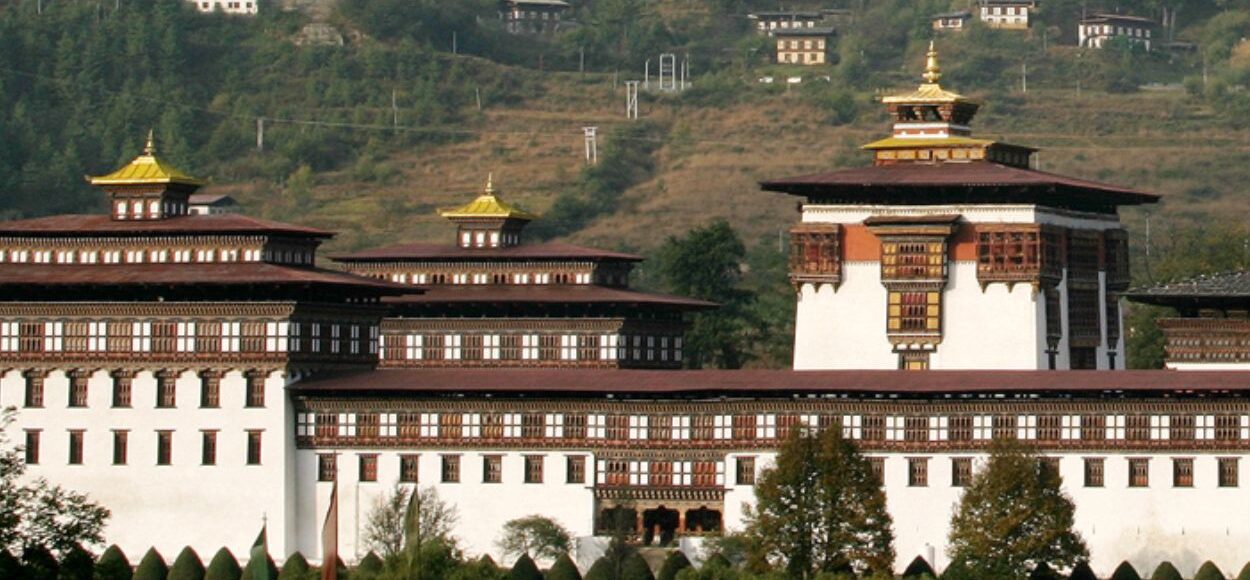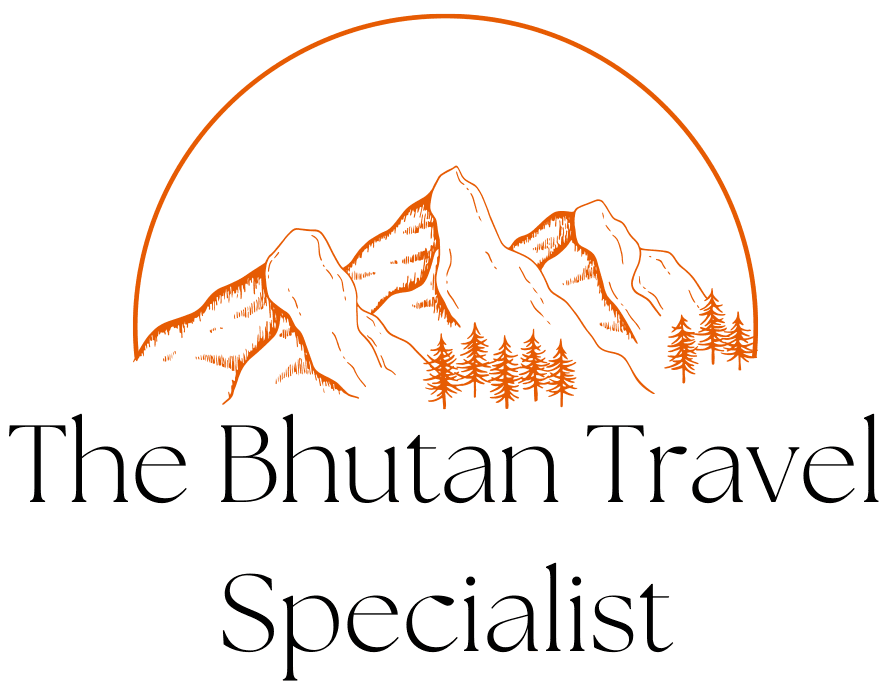Do not hesitate to give us a call. We are an expert team and we are happy to talk to you.
(+975) 17953762

Overview:
Embark on a delightful 4-day Bhutan Sightseeing Tour, exploring the cultural and natural wonders of this enchanting kingdom. Begin your journey in Thimphu, the capital city, where modern development harmoniously coexists with ancient traditions. Visit Tashichho Dzong, the National Library, and the Institute for Zorig Chusum. Explore the Textile Museum, Simply Bhutan, and other cultural landmarks. Drive to Paro, where the iconic Tiger’s Nest awaits your visit. Immerse yourself in the religious and artistic ambiance of Ta Dzong and Rinpung Dzong. Enjoy the vibrant markets and nightlife in Paro. Bid farewell to Bhutan with cherished memories.
Tour Highlights:
1. Explore Thimphu’s cultural landmarks, including Tashichho Dzong, the National Library, and the Institute for Zorig Chusum.
2. Discover the art of Bhutanese textiles at the Textile Museum and experience Bhutanese culture at Simply Bhutan.
3. Visit Changangkha Lhakhang, Buddha Point, Simtokha Dzong, and the King’s Memorial Chorten in Thimphu.
4. Drive to Paro and embark on a thrilling excursion to the iconic Tiger’s Nest.
5. Explore Ta Dzong and Rinpung Dzong in Paro, soaking in their religious and artistic significance.
6. Enjoy leisure time in Paro, exploring local markets and experiencing the lively nightlife.
7. Bid farewell to Bhutan with a stroll in Paro, shopping, or relaxation before departing.
Paro International Airport (Google Map)
Upon arriving in Paro by flight, you will be transferred to the vibrant capital city, Thimphu. On the way, you will stop at Chuzom, where the rivers Thimphu and Paro converge, and admire the three unique chortens. You will also see the Tachogang Lhakhang, known as “the temple of excellent horse.” Once you arrive in Thimphu and check into your hotel, you will be captivated by the blend of modern development and ancient traditions. Visit the magnificent Tashichho Dzong, which hosts the colorful Tsechu festivals, and explore the lively city in the evening. Don’t miss the opportunity to visit the Local Crafts Bazaar and purchase hand-woven textiles, thangkha paintings, masks, and more. Spend the night at the hotel in Thimphu.
After a refreshing breakfast, embark on a sightseeing tour of Thimphu valley. Visit the National Library, home to a valuable collection of Buddhist manuscripts, and the Institute for Zorig Chusum (the Painting School), where students learn various traditional arts and crafts. Discover the art of Bhutanese textiles at the Textile Museum and immerse yourself in Bhutanese culture at Simply Bhutan, where you can try traditional food and engage in their traditional sport, Archery. After lunch, visit Changangkha Lhakhang, Buddha Point (Kuensel Phodrang), Simtokha Dzong, and the King’s Memorial Chorten to learn more about Bhutanese beliefs and history. In the afternoon, drive to Paro and check into your hotel for an overnight stay.
Start your morning with a visit to the iconic Tiger’s Nest, also known as Taktshang Monastery. Enjoy a two-hour ride to this holy place and witness the breathtaking views from its high altitude. In the afternoon, explore Ta Dzong and Rinpung Dzong, immersing yourself in their religious and artistic atmosphere. Spend the vibrant evening exploring shops and local markets in Paro Main Street or experiencing the lively nightlife in bars and clubs. Spend the night at the hotel in Paro.
It’s time to bid farewell to Bhutan. After breakfast, take some time to stroll around the city, go shopping, or relax in a hotel or coffee shop, reminiscing about the memorable moments of your Bhutan sightseeing tour. Our representative will meet you at your hotel before your flight departs and escort you to Paro International Airport. Your Bhutan trip comes to an end, and we hope you had a wonderful time. We look forward to serving you again in the future.
There are 19 languages spoken in Bhutan, but the national language is Dzongkha. English is used throughout Bhutan’s education system, so it is widely used and understood.
Bhutan is a year-round destination. There are four seasons: summer (June to August), autumn (September to November), winter (December to February) and spring (March to May). But because of the range of altitudes in the country, and the influence of the north Indian monsoons, the climate is incredibly varied.
In the south, the humid, subtropical climate is fairly consistent year-round, with temperatures between 15oC and 30oC. Central Bhutan, with its temperate forests, has a more seasonal climate, with warm summers and cool, dry winters. The northern regions are much colder during winter. Because of the high altitude, mountain peaks are snowy year-round and the lower reaches remain cool in summer.
In summer, the Indian monsoon season runs from late June or July to late September, mostly affecting the southern regions. Most farming activities take place in the summer, when crops thrive in verdant landscapes.
Autumn, from late September or early October to late November, follows the rainy season. It is characterised by bright, sunny days and some early snowfall at higher elevations. It’s the season of feasts and festivals as farmers reap the fruits of their work.
From late November until March, the crisp, clear and sunny winter sets in, with frost throughout much of the country and snowfall common above elevations of 3,000 metres. The winter northeast monsoon brings gale-force winds at the highest altitudes through high mountain passes, giving Bhutan the name Drukyul, which means Land of the Thunder Dragon in Dzongkha (Bhutan’s national language).
Bhutan’s generally dry spring starts in early March and lasts until mid-April. It is a botanist’s delight, with nature in full bloom. Summer weather commences in mid-April with occasional showers and continues to late June.
Bhutan’s currency is called ngultrum. It’s 1:1 with Indian rupees.
Three different electrical plugs are used throughout Bhutan: the British plug (three square pins, compatible with type G sockets), the European plug (two round pins, compatible with type C socket) and the Indian plug (three thick round pins, compatible with type D sockets). It’s a good idea to bring adaptors for all three.
For telephone calls, Bhutan’s country code is +975. Make sure you add this to the beginning of any number if calling Bhutan from abroad.
You can apply online for a visa by completing this application form, or if you’re travelling with a tour operator, they may apply on your behalf. Read more about the visa here.
Visitors from Bangladesh and the Maldives requiring a visa can apply either online before travelling or in person upon arrival in Bhutan.
There is a one-off fee of US$40 for the processing of your application. This is payable at the same time as your Sustainable Development Fee (SDF), as part of the process of submitting your visa application.
The SDF is USD 100 per night for adults from all countries except for India. Children aged between 6 years and who have not yet turned 12 are eligible to pay USD 50 per night. Children who have not yet turned 6 years old do not have to pay any SDF.
The SDF for Indian nationals (showing a valid Indian passport or Voter ID card) is Nu. 1,200 (or the equivalent amount in Indian rupees) per person, per night. Children aged between 6 years and who have not yet turned 12 are eligible to pay Nu./INR 600 per night. Children who have not yet turned 6 years old do not have to pay any SDF.
Tourists visiting Samtse, Phuentsholing, Gelephu, and Samdrupjongkhar towns for 24 hours need not pay Sustainable Development Fee (SDF) beginning April 14, 2023. The waiver will be enforced for a year. The SDF waiver will only apply for tourists who do not travel beyond the designated zones of border towns. However, SDF will apply for visitors who travel beyond the designated zone of border towns.
Tourists will be charged SDF if they go beyond Gurung Basti in Samtse, and beyond Rinchending Checkpost in Phuentsholing. The designated zone in Gelephu is at Aipoli Bridge and Pinchinna checkpost in Samdrupjongkhar.
